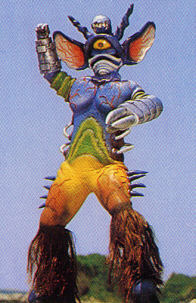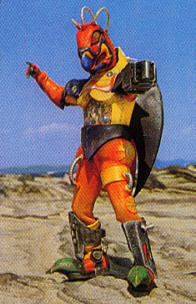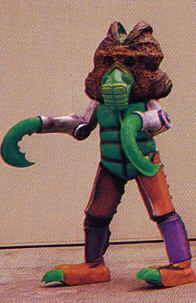Dear Ed Chavez and Vertical Inc,
I see that you were taking suggestions for manga licenses on your
twitter (are you still doing that?), which is really nice. I thought I would put a few suggestions on my own
twitter, but you know what? 140 characters is not enough for the Cat Demon Spirits. So, here are 6 manga that you and Vertical should take a look at:
 Plastic Girl Usamaru Furuya
Plastic Girl Usamaru Furuya
One of Usamaru Furuya's more interesting creations, Plastic Girl is a comic created through unusual mediums such as stained glass, and (apparently) features Furuya's usual quirky surrealistic imagery; in one scene, a girl gives birth to a teddy bear. I'm not totally sure who published this manga, as it isn't even listed on wikipedia (my main resource; I learned of Plastic Girl at the recent TCAF), but I have the impression that Vertical wants to publish more Furuya, and I think this would be a good place to start, even if it has to be a $40 art book.
 Jungle Emperor (aka Kimba the White Lion) Osamu Tezuka, Kodansha
Jungle Emperor (aka Kimba the White Lion) Osamu Tezuka, Kodansha
It's be hard to think of Vertical without thinking of Tezuka. The publisher has brought over the some of Manga God's most famous creations, works such as Dororo, Buddha, Ode to Kirihito, and (later this year) Princess Knight. It will be a long time before I
won't be able to think of an unlicensed Tezuka gem, but one of the most obvious is Jungle Emperor, the classic story of a little cub named Leo and his struggle to become king of the beasts. The series is already moderately known among western audiences (though overshadowed by the success of Astro Boy) for its animated adaption that was brought to the US under the name Kimba the White Lion, and may have even inspired for The Lion King! And besides, it's Tezuka, so do I really have to say anything?
 Devilman Go Nagai, Kodansha
Devilman Go Nagai, Kodansha
Go Nagai is one of Japan's most famous mangaka, a pioneer of the shonen genre, creator of such untranslated classics as Cutey Honey, Shameless School, Mazinger Z, and of course, Devilman. Nagai's psychedelic magnum opus, Devilman is the story of an apocalyptic world infested with demons, hippies, and destruction. There have been several attempts to bring Devilman to the english market, but sadly, not counting the rare Kodansha Bilingual Edition, all have failed. Devilman (and, in fact, any other Nagai) makes a lot of sense for Vertical to publish, for its edgy, barrier-breaking content, mainstream hit potential, and famous (in Japan) but poorly represented (here) creator.
 Makto-Chan Kazuo Umezu, Shogakukan
Makto-Chan Kazuo Umezu, Shogakukan
The Drifting Classroom may have shown the world the primal terror of Kazuo Umezu's imagination, but there's one side to him the english language still has yet to see: his sense of humor. Makoto-Chan is Kazz's most famous foray into gag manga, stars a kindergartner named, well, Makoto-chan, who gets into all sorts of third grade humor-type trouble. I personally have a strong tolerance for gag comics like this so long as they are unique and crafted with skill, and Umezu's manga tend to be both. Umezu's work seems to have been an influence on Usamaru Furuya, so it does make sense for Vertical to publish a work like Makoto-Chan (though maybe Fourteen would make more sense? Please license that too, please!). Anyway, it's dumb fun, and who needs an excuse for more dumb fun?
 Hataraki Man Moyoko Anno, Kodansha
Hataraki Man Moyoko Anno, Kodansha
There have been
plenty of bloggers decrying the underrepresented awesomeness of
Josei manga lately, so I figure it makes sense to mention one here. Though serialized in the seinen magazine Morning, Hataraki Man is undeniably josei, a romantic comedy about a workaholic Office Lady (the japanese title translates as Hardworking Man) whose devotion to her job is rivaled only by her boyfriend's. Moyoko Anno is one of Japan's most famous contemporary josei artists, and also created Happy Mania (which received critical acclaim here from its Tokyopop localization) and the popular shojo manga Sugar Sugar Rune. (She is also married to Hideaki Anno, the man behind Evangelion! Not that it matters...) Anyway, Vertical has had much success bringing previously niche genres like seinen to english readers, so I'd love to see the same happen with josei, and Hataraki Man would be a good place to start.
 Tomodachi 100 Nin Dekiru Kana/I Wonder if I can Make 100 Friends? Minoru Toyoda, Kodansha
Tomodachi 100 Nin Dekiru Kana/I Wonder if I can Make 100 Friends? Minoru Toyoda, Kodansha
Love Roma is my favorite manga. It's a sweet, simple, slice-of-life story that I can't talk about without my words turning into gibberish about how good it is. (I'll try to re-write my review of it at some point, though) As you can imagine, I'd love to see more manga by Minoru Toyoda, the manga's artist, in english, and 100 Friends seems to be the most notable of his other series, as sweet as Love Roma, but with a sci-fi twist. According to
ANN,
The science fiction story centers on a grade school teacher who stumbles into an alternate world on the day his wife-to-be would be born. According to the magazine's advertising blurb, "the fate of humanity rests on an important vow."
Sounds cute, right? I think this manga would look very good as a Vertical title. Despite being the publisher of "edgy" manga like Peepo Choo and Lychee, Vertical has put out some of what I would call the best cute manga of all time. Twin Spica. Chi's Sweet Home. Couldn't you imagine something by Toyoda sitting next to those? It would be fantastic!
Thank you for (hopefully) reading my open letter to you, Mr. Chavez. I sincerely hope you and Vertical can make my dream reading list a reality, and thank you for publishing so many wonderful Japanese books and manga already! We all appreciate it.
-N
PS: While you're at it, please also license Doraeman.


















































